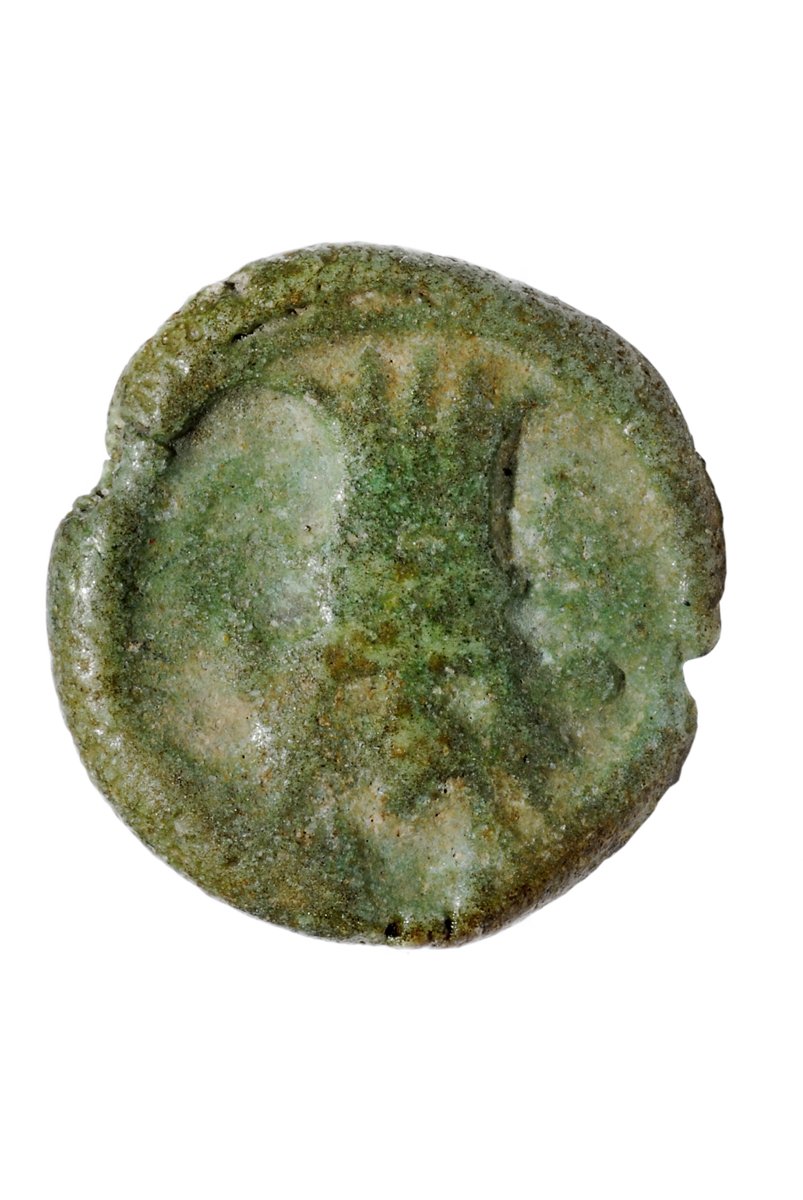
CIRCULAR PLAQUE AMULET WITH BES HEAD AND WEDJAT EYE
Egyptian Art
| Place of production | Egypt |
|---|---|
| Date | 747–332 BC |
| Object type | statuette |
| Medium, technique | limestone, carved, painted |
| Dimensions | 8.2 x 3.7 x 2.6 cm |
| Inventory number | 52.806 |
| Collection | Egyptian Art |
| On view | This artwork is not on display |
Fragment of a soft limestone plaque with painted relief decoration that represents a group of ancient Egyptian works of figural arts depicting females reclining on a bed or crouching, standing alone or accompanied by a small-sized figure of a child, sometimes bordered by images of vessels, cosmetic tools or various objects of daily use. This type seems to have been introduced in the New Kingdom and continued to be used until the end of the Late Period, and includes specimens made primarily of terracotta and limestone, rarely faience.
Despite its incomplete state of preservation and rather worn surface, this piece is undoubtedly a product of high-quality workmanship with the figure’s well-proportioned body and fine, detailed elaboration of her members. Her naked, slender body appears to stand out from the plane of the back slab modelled as a bed. Both arms rest at her sides, her closed legs are broken off above the knees. The breasts are defined and rounded, the navel is marked by a small, oval depression, and the pubic triangle still retains traces of black paint. The body was originally painted in ochre, her short, round and curled wig in black. The reddish paint of the bed is still clearly visible along the left edge and above the head.
Prevailing scholarly theories tend to label these objects as fertility figurines that may have been deposited as votive offerings in tombs, domestic shrines and temples of the goddesses Hathor, Mut or Anuket to promote successful conception and grant divine blessings in the perilous time of early childhood.
This record is subject to revision due to ongoing research.